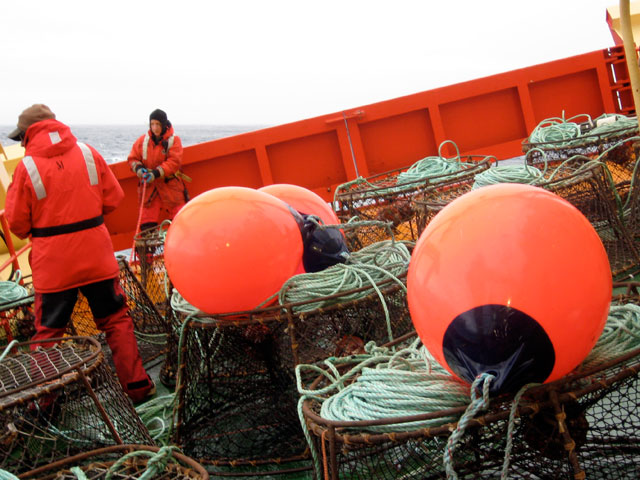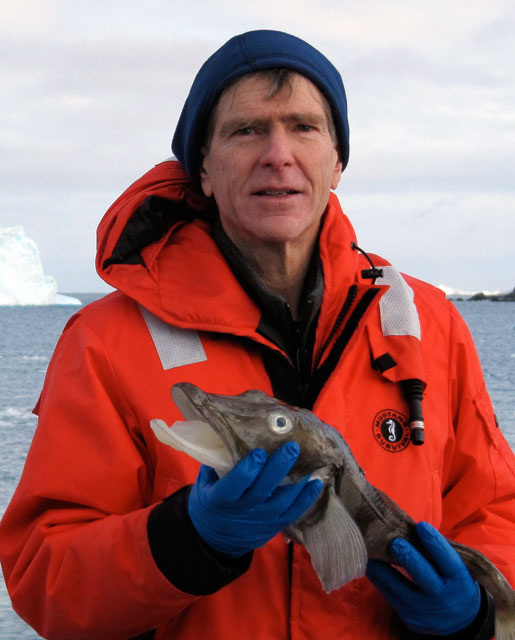|
Raising NotothenioideiScientists successfully develop icefish embryos for evolutionary studiesPosted October 5, 2012
The cold-loving fish that inhabit the Southern Ocean are Antarctica’s version of Darwinian finches — an endemic group of different species that evolved special adaptations to fill empty ecological niches. The eureka moment for Charles Darwin involved the morphology, or shape, of the birds’ beaks, which he found varied around the Galapagos Islands in response to available food sources. In the case of the Notothenioidei, the evolutionary twists and turns that occurred as the Antarctic region cooled more than 30 million years ago resulted in the selection of a number of unusual mutations that allowed various fish species to fill abandoned habitats in the ocean. Now, researchers are delving into molecular genetics to understand how millions of years of evolutionary adaptations will fare against changes in the Antarctic climate that are predicted to take place on the scale of centuries. “It’s a very exciting time in terms of evolutionary genetics,” said Bill Detrich A veteran polar researcher, Detrich is collaborating with John Postlethwait All three biologists and their research teams were at Palmer Station The 120-plus species of Notothenioidei, most of which inhabit waters from about minus 2 degrees Celsius to 4 degrees Celsius, evolved from a common ancestor without a swim bladder, an organ other fish possess that helps them attain neutral buoyancy in the water column. However, millions of years of evolution eventually offered a way for some notothenioids to get off the seafloor. One strategy involves the development of lipids, or fats, that are less dense than water. Another way is to grow a lightweight, brittle skeleton. “You can accumulate things that are less dense than water — or you can get rid of things that are more dense than water. These animals diminished the densest tissue in their bodies — bone,” explained Postlethwait, whose work is also supported by the National Institute of Aging What’s an evolutionary advantage for one organism is a human bone density condition called osteopenia, which is believed to be a precursor to the more serious disease known as osteoporosis. “The problem that we want to solve is to figure out what are the [icefish] genes that have changed over time — what mutations have occurred — that distinguish these animals that have osteopenia from the strong-boned animals that stayed on the bottom,” Postlethwait said. “We need to study what happens over developmental time, as the skeleton initially develops in these animals.” That’s proven to be the most challenging aspect of the project. The researchers chose two related but very different Antarctic fish as the principal subjects of their study. In one corner is the Antarctic yellowbelly rock cod (Notothenia coriiceps), which has a standard skeleton and idles away its time on the seafloor. Its opposite is the blackfin icefish (Chaenocephalus aceratus) with its reduced skeletal structure that allows it to enjoy a more pelagic existence. The former is a red-blooded animal while the latter belongs to icefish family, whose 16 species have no hemoglobin in their blood, a disadvantage just about anywhere else but in the oxygen-rich waters of the Southern Ocean. But it’s the reproductive behavior of the white-blooded icefish that proved to be a challenge to the scientists, who need embryos for their experiments. In 2008, they successfully mated N. coriiceps, which is a broadcaster spawner, meaning the female releases her eggs and the male his sperm in the water column, where fertilization takes place. In contrast, females of C. aceratus lay a nest of eggs, which the male fertilizes and guards. Attempts to develop embryos from the white-blooded icefish failed in 2008 and again in 2010. This was a make-or-break season, according to Detrich. “This year it was really critical for us to do that,” he said. “This year we were very successful. We got not one but two different [white-blooded] icefish species.” In addition to the blackfin icefish, the team was also able to perform in vitro fertilization on Champsocephalus gunnari, known as the mackerel icefish. “The breeding of the icefish that we accomplished this season is the first time that [white-blooded] icefish have been grown,” Detrich said. “That was a significant accomplishment.”1 2 Next |



For USAP Participants |
For The Public |
For Researchers and EducatorsContact UsNational Science FoundationOffice of Polar Programs Geosciences Directorate 2415 Eisenhower Avenue, Suite W7100 Alexandria, VA 22314 Sign up for the NSF Office of Polar Programs newsletter and events. Feedback Form |




